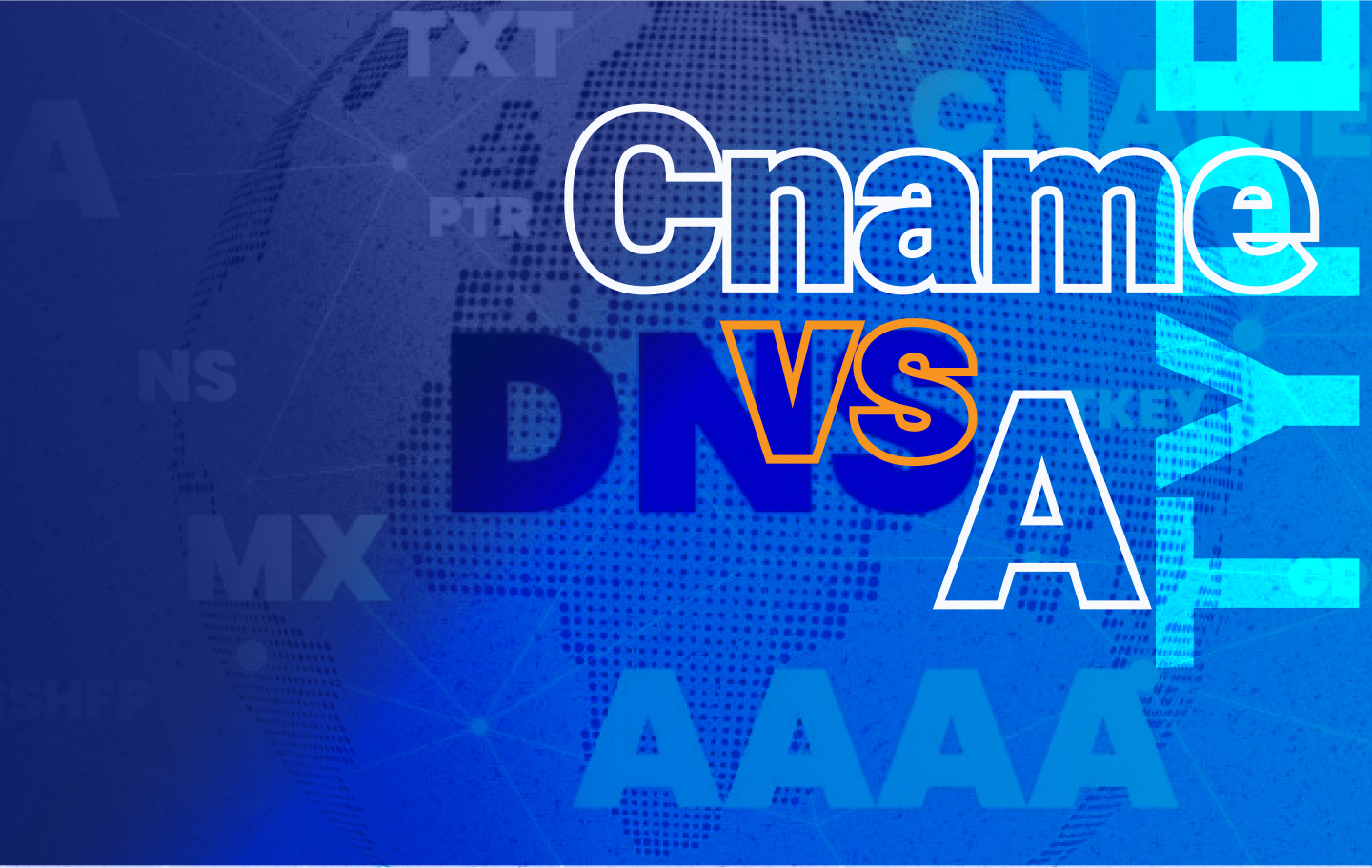The Domain Name System or DNS connects our web browsers to websites. It acts like the internet phonebook servers use to map domains to their corresponding IP addresses.
However, understanding DNS and its components can be daunting, especially regarding resource records. From SOA records in the DNS and PTR records to TXT records, MX records, and NS records, DNS components are tricky.
Still, to mitigate DNS spoofing and ensure your website’s peak performance, it’s a good idea to understand the fundamentals.
Two DNS records that are often confused are the DNS A record and CNAME record.
In our DNS A record vs. CNAME record blog post, we discuss each DNS record and how it works. Then we’ll move to the differences between them. Let’s get started!
How Does the CNAME Record Work?
Unlike the A record, the DNS CNAME record maps a domain name to another domain name. In most cases, a CNAME record is used instead of a DNS A record, as it can only point to a domain name.
In the case of an A record, its purpose is to associate a domain or URL with its corresponding IP address.
For example, to load mywebsite.com, you need to point to its IP address like 192.168.10.1. However, this doesn’t include an alias domain like www.mywebsite.com.
So if a user types www.mywebsite.com into their browser, the CNAME record tells servers that www.mywebsite.com should lead to the same page as mywebsite.com.
Additionally, CNAME records establish a connection between a parent domain and subdomains. If you have subdomains like blog.mywebsite.com and mail.mywebsite.com, you need CNAME records to link them to their parent domain, mywebsite.com.
How Does an A Record Work?
The DNS A record or Address record is one of the vital types of DNS records, specifying a particular domain’s IP address.
For instance, if you pull the DNS A record of mywebsite.com, you should get the responding IP address in this format, 192.168.10.1. Every domain must have an A record, which plays a vital role in IP address lookup.
The A record in the DNS points a domain name to an IPv4 address. With this record, a user on the internet can connect and load your webpage without remembering the IP address. For instance, you can type the domain name EasyDMARC into your URL search bar, and the DNS A record pulls up the IP address.
What’s the Difference Between CNAME vs. A Records?
CNAME and A records are often confused with each other, but there are differences. First, an A record can only connect the primary parent domain to the corresponding IP address. On the other hand, CNAME records link the parent domain to its alias or subdomains.
In other words, CNAME records can point to other CNAME records or A records but A records can only point to the IP address of a domain. Moreover, a parent domain can only have an A record, not a CNAME record.
Summary
This CNAME vs. A record guide explains the differences between CNAME and A records. Both records are vital configurations you need to include in your domain settings. Even if you run a single-page website, you still need a CNAME record to connect the “www” to the main domain page.


